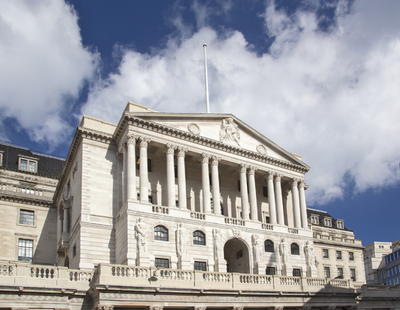The share of homeowners struggling to repay their mortgages could hit the same peak levels of the 2008 financial crisis by the end of next year, the Bank of England has warned.
A quarterly update from the Bank’s Financial Policy Committee (FPC) warned that higher inflation and rising interest rates will weigh on households repaying debt.
It said the continued rise in living costs and interest rates will put increased pressure on UK household finances in coming months and make households more vulnerable to shocks.
The report said: “Overnight swap rates, which feed directly into mortgage interest rates, were, at the time of the FPC Policy meeting, priced to peak at around 6%.
“Assuming rates follow this market-implied path, the share of households with high cost-of-living adjusted mortgage debt-servicing ratios would increase by end-2023 to around the peak levels reached ahead of the global financial crisis (GFC).”
However, the FPC concludes that households are in a stronger position than in the run-up to the GFC, so UK banks are less exposed to household vulnerabilities.
It said: “The ratio of aggregate household debt to income is well below the pre-GFC peak and the share of outstanding mortgage debt at high loan-to-value ratios is much lower.
“The UK banking sector is also much better capitalised compared with the pre-GFC position, mitigating the risk that losses on loans cause lenders to reduce credit supply in order to preserve capital.
“In addition, lenders are now required to apply flexible approaches to repayments and only use repossessions as a last resort. Nevertheless, it will be challenging for some households to manage the projected rises in the cost of essentials alongside higher interest rates.”
Meanwhile, investment bank UBS has released its annual Global Real Estate Bubble Index, highlighting that Toronto and Frankfurt exhibit the most elevated risk levels on housing markets.
UBS analysed residential property prices in 25 major cities around the world.
It tries to identify “price bubbles” where there are signs of decoupling of prices from local incomes and rents and imbalances in the real economy.
Frankfurt and Munich exhibit the biggest risks of a property bubble among the Eurozone markets covered in this report, UBS said.
It added: “Both German cities have seen property prices more than double in nominal terms over the last decade, though growth has cooled to around 5% between mid-2021 and mid-2022 from double-digit levels.
“In Munich, the housing market is supported by an ultra-low vacancy rate and a growing workforce, but the rather subdued German economic outlook presents a drag on housing demand.
“Higher mortgage rates have already worsened affordability: a skilled worker from the service sector can now buy an apartment with one room less in Munich on average than before the pandemic.”
For London, UBS suggests that “the risk of a real estate bubble in London has slightly decreased compared to a year ago, but still leaves the housing market in overvalued territory.”
The report said: “Prices are now 6% higher than a year ago, supported by a structural shortage of housing amid increasing post-pandemic demand.
“But the index score has remained stable over the last quarters. Rents have surged as would-be buyers face difficulties finding appropriate properties. Moreover, housing prices in the city still lag the nationwide average.”





























Join the conversation
Be the first to comment (please use the comment box below)
Please login to comment